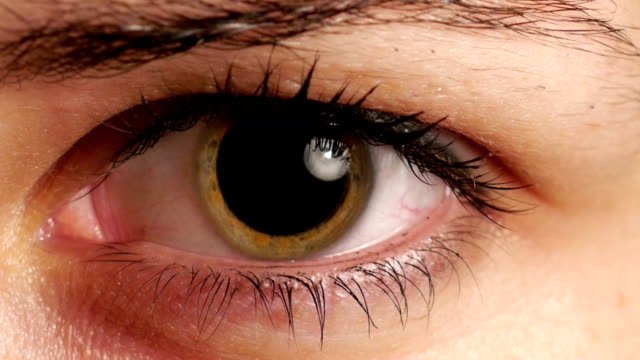What drugs cause dilated pupils?
Pupil dilation, also known as mydriasis, is the enlargement of the pupils in the eye. It occurs when the iris dilator muscles contract and the iris sphincter muscles relax, allowing more light to enter the eye. While pupil size commonly fluctuates naturally due to changes in lighting conditions and visual focus, excessive dilation can be a key indicator of indicate substance use or abuse.
Gaize uses pupil size and motion as one of the key factors that is analyzed during the impairment detection process. The system analyzes pupil size to an accuracy within 0.01 mm at a sampling frequency of 90 hz. If that doesn’t mean anything to you, just know that Gaize measures pupil size 90 times per second to a very high level of precision.
How Drugs Affect Pupil Size
Many common drugs of abuse, particularly psychoactive and psychotropic substances, can cause pupil dilation by disrupting the delicate balance of the sympathetic and parasympathetic nervous systems that regulate pupil size. These changes commonly persist for the duration of impairment and pupil function returns to normal after the impairment has passed.
Categories of substance that dilate pupils include:
Stimulants: Examples include amphetamines (including speed and methamphetamine), cocaine, MDMA (ecstasy), and prescription drugs like Adderall and Ritalin tend to trigger the sympathetic nervous system. This results in pupil dilation among many other physiological effects like increased heart rate and blood pressure.
Psychedelics: Examples include psilocybin mushrooms, mescaline, and many other synthetic psychedelics also cause dilated pupils by agonizing the 5-HT2A serotonin receptors in the brain. Antidepressants like SSRIs can have a similar pupil-dilating effect through their interactions with serotonin, though the effect is generally much less pronounced.
Other Drugs: Certain prescription drugs, and some inhalants may indirectly cause dilation.
While pronounced pupil dilation can signal potential substance use, it is not a conclusive test on its own. Other factors like lighting conditions, medications, injuries, and individual physiology can influence pupil size as well. This is why Gaize analyses many other factors in addition to pupil dynamics in searching for suspected drug impairment.
Assessing Pupil Dilation for Substance Use and Abuse
To aid in evaluating potential substance use through pupil dilation, law enforcement and medical personnel often refer to resources like the Drug Recognition Expert (DRE) protocol and pupillometry scales:
Drug Recognition Expert (DRE) Protocol: Developed by the International Association of Chiefs of Police (IACP) and National Highway Traffic Safety Administration (NHTSA), the DRE protocol trains officers to identify drug categories based on a 12-step evaluation, including assessing pupil dilation along with other physiological indicators like blood pressure, body temperature, and behavioral signs.
Pupillometry Scales: Visual charts or "drug recognition cards" show illustrations of pupil sizes that may indicate various drug categories like stimulants, depressants, hallucinogens, etc. Officers can reference these against the suspected individual's pupils.
While useful aids, these tools are distinctly low precision and have many limitations that Gaize is not subject to. Environmental factors like lighting conditions, medical conditions, and measurement errors can have a profound impact on results. As with Gaize’s impairment detection technology, human assessment of pupil dilation is part of a broader screening approach combining many other factors.
In summary, excessive pupil dilation can signify potential substance use or misuse, especially for stimulants, psychedelics, and certain prescription drugs. However, it should be evaluated cautiously alongside other indicators by trained professionals as part of a comprehensive screening process.
References:
An evaluation of pupil size standards used by police officers for detecting drug impairment Jack E. Richman, O.D.,a Kathleen Golden McAndrew, M.S.N., ARNP,b Donald Decker,c and Stephen C. Mullaney, B.S., M.S.d
https://www.theiacp.org/sites/default/files/all/i-j/JAOA%20Pupil%20Size%20paper%20Richman.pdf
Koller D, Saiz-Rodríguez M, Zubiaur P, Ochoa D, Almenara S, Román M, Romero-Palacián D, de Miguel-Cáceres A, Martín S, Navares-Gómez M, Mejía G, Wojnicz A, Abad-Santos F. The effects of aripiprazole and olanzapine on pupillary light reflex and its relationship with pharmacogenetics in a randomized multiple-dose trial. Br J Clin Pharmacol. 2020 Oct;86(10):2051-2062. doi: 10.1111/bcp.14300. Epub 2020 Apr 27. PMID: 32250470; PMCID: PMC7495280.
https://www.ncbi.nlm.nih.gov/pmc/articles/PMC7495280/
Peragallo J, Biousse V, Newman NJ. Ocular manifestations of drug and alcohol abuse. Curr Opin Ophthalmol. 2013 Nov;24(6):566-73. doi: 10.1097/ICU.0b013e3283654db2. PMID: 24100364; PMCID: PMC4545665.
https://www.ncbi.nlm.nih.gov/pmc/articles/PMC4545665/

